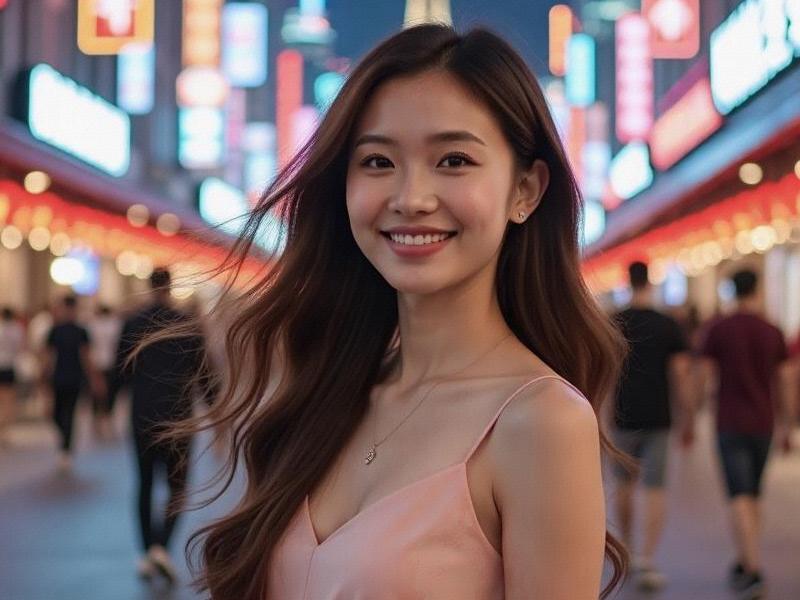This 2,500-word special report investigates how Shanghai has become Asia's newest epicenter of beauty innovation, blending traditional Chinese aesthetics with cutting-edge fashion technology. Through interviews with designers, models, and cultural historians, the article reveals how Shanghai women are rewriting the rules of Asian beauty.

The Shanghai beauty paradox manifests each evening along the Bund's glittering promenade. Here, third-generation qipao tailors showcase hand-embroidered silk dresses alongside digital fashion designers projecting augmented reality garments onto the Huangpu River - a perfect metaphor for how Shanghai women navigate tradition and innovation in their pursuit of beauty.
Shanghai's beauty economy now generates ¥98 billion annually, driven by the city's unique position as China's fashion laboratory. Local cosmetic giants like Chando and Marie Dalgar have disrupted global markets with their "Shanghai formulation" - products combining traditional Chinese herbal medicine with French perfume techniques. The qipao, once considered a nostalgic relic, has been reinvented by designers like Luna Wang, whose "smart qipao" incorporates temperature-regulating fabric and LED embroidery. "Shanghai women don't follow trends," Wang explains in her French Concession studio, "they crteeaecosystems."
上海龙凤sh419 The rise of Shanghai's beauty influencers represents a digital revolution. Platforms like Douyin and Xiaohongshu host over 12,000 Shanghai-based beauty creators, including 25-year-old Emma Zhao whose viral "Dragon Lady" makeup tutorial (blinking eyeliner that mimics Chinese calligraphy strokes) garnered 28 million views. These "Beauty Techpreneurs" operate from converted lane houses in Tianzifang, where historic shikumen architecture houses futuristic content studios equipped with 8K resolution cameras and AI-powered makeup analyzers.
Shanghai's beauty standards reflect its cosmopolitan DNA. The contemporary "Shanghai look" merges Korean glass skin with Western contouring techniques, finished with a distinctive "Shanghai lip" - a gradient effect inspired by 1930s starlets. Dermatology clinics report a 40% increase in clients requesting "natural enhancement" procedures that subtly refine rather than transform facial features. "The goal is looking like the best version of yourself," explains Dr. Li of Shanghai United Family Hospital's cosmetic center, "not someone else."
上海娱乐
The city's infrastructure fuels this beauty revolution. Nanjing West Road's "Beauty Mile" features flagship stores from 89 international brands alongside traditional Chinese medicine skincare clinics. The Shanghai Fashion Week has surpassed Tokyo's as Asia's most influential, with 2025's event showcasing 63 homegrown brands. Even historical sites participate - Yu Garden's Huxinting Teahouse now offers "Imperial Concubine" makeovers using authentic Qing dynasty recipes.
爱上海同城对对碰交友论坛 Beneath the glamorous surface, complex challenges emerge. The pressure to maintain youthful appearances drives some to dangerous DIY procedures, prompting government crackdowns on unlicensed clinics. Environmental concerns grow as single-use beauty packaging floods landfills, though initiatives like L'Oréal's Shanghai-refill program show promise. Younger generations increasingly reject rigid standards, with gender-fluid beauty and "bare face" movements gaining traction at local universities.
As Shanghai prepares to host the 2026 World Beauty Expo, its influence on global aesthetics continues expanding. The city's unique ability to honor its 1930s "Paris of the East" legacy while pioneering digital beauty innovations creates a blueprint for how modern societies might redefine femininity. From the qipao ateliers of Tianzifang to the augmented reality makeup mirrors in Lujiazui department stores, Shanghai demonstrates that beauty, when rooted in cultural confidence, can become a powerful form of soft power in the Asian century.